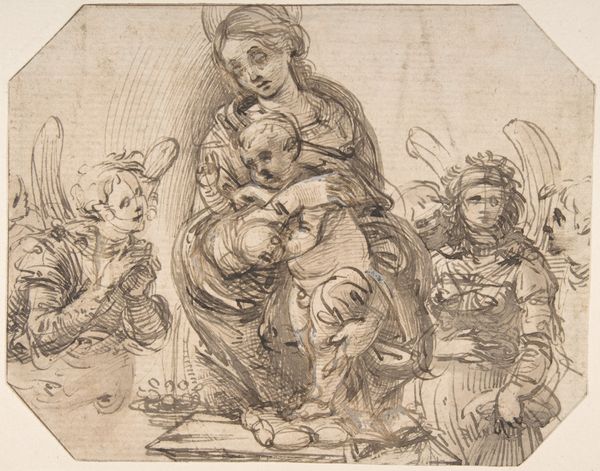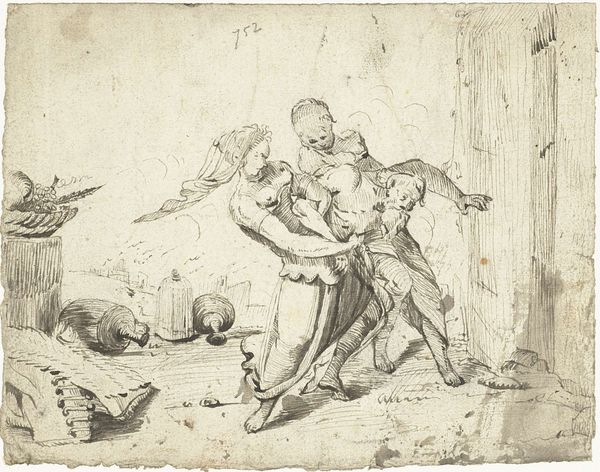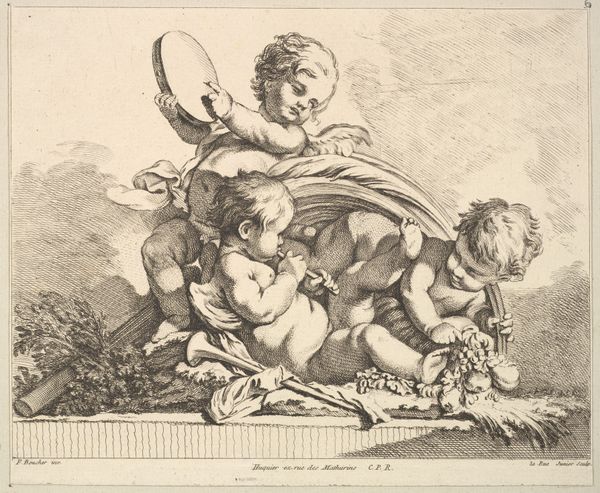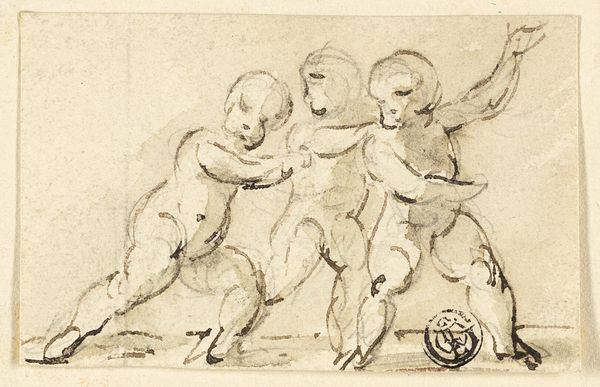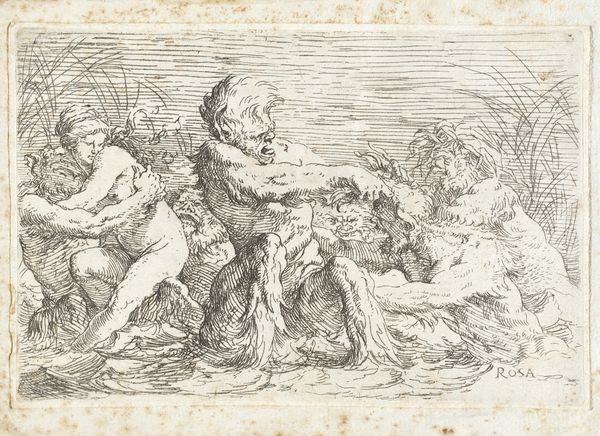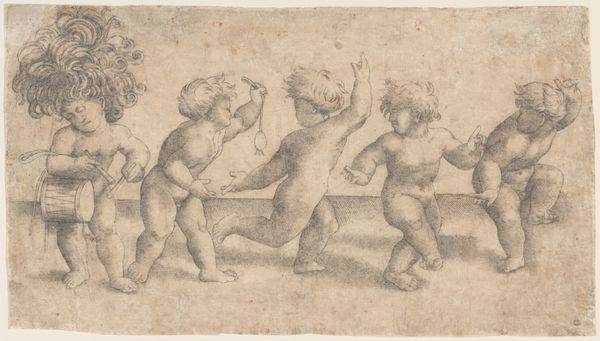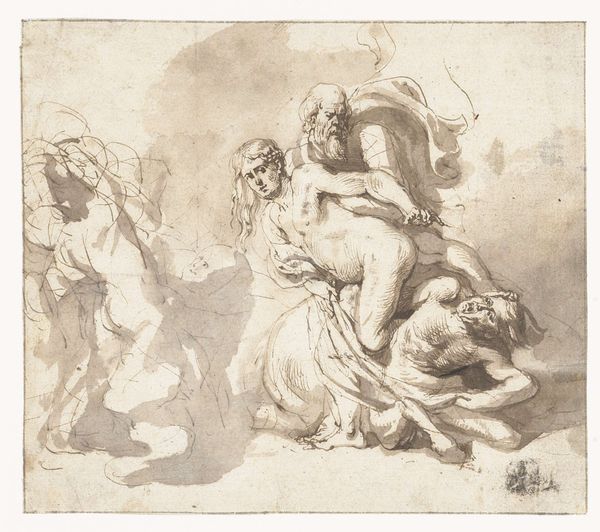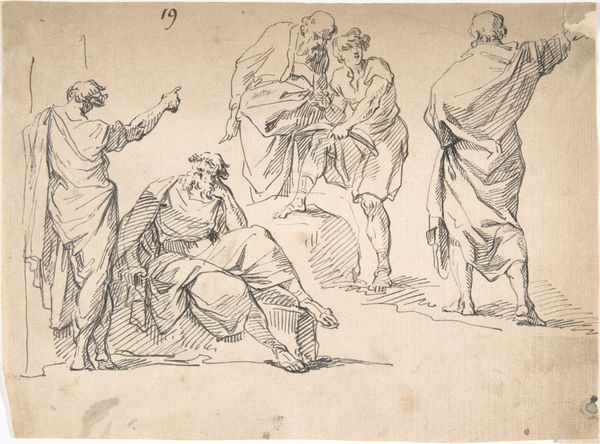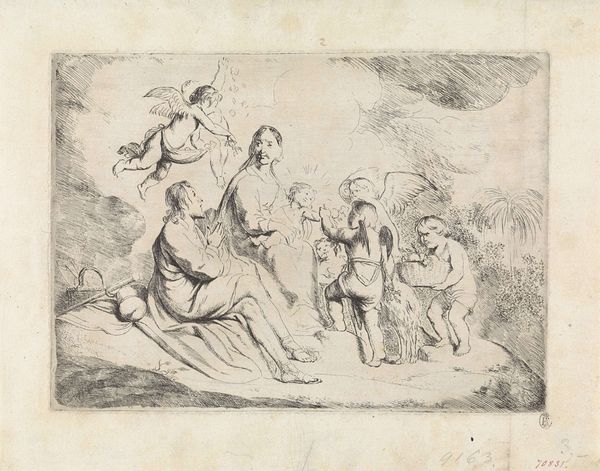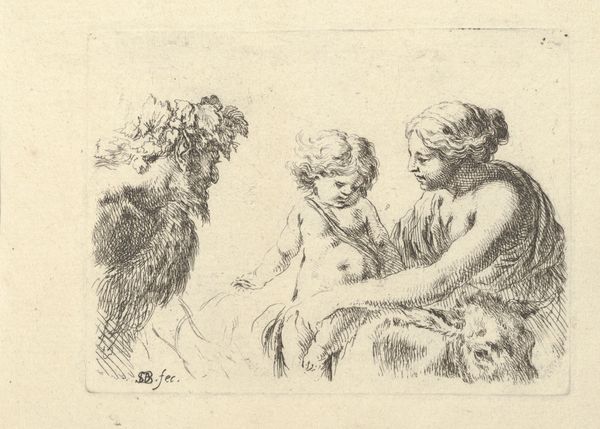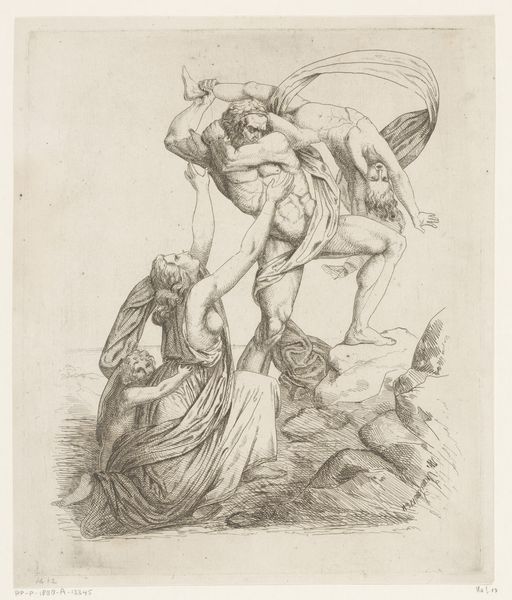
drawing, ink
#
portrait
#
drawing
#
baroque
#
pen sketch
#
figuration
#
ink
#
nude
Dimensions: height 153 mm, width 226 mm
Copyright: Rijks Museum: Open Domain
This etching, “Twee keer Maria met kind,” was created by Jan de Bisschop in the 17th century. It is rendered with a technique that is all about the surface. A metal plate, likely copper or zinc, would have been coated with a waxy ground, and then the artist would have drawn through it with a sharp needle, exposing the metal beneath. The plate was then immersed in acid, which bit into the exposed lines, creating recessed grooves. These grooves hold ink, allowing the image to be transferred to paper under high pressure. This process creates the fine lines and intricate details of the artwork. Look closely and you can see the varying depths and thicknesses of the etched lines, which create the illusion of light and shadow. Etching allowed for multiple copies to be made efficiently, contributing to a burgeoning market for art prints. The ability to reproduce and distribute images played a role in shaping the art market as we know it today. It allowed artists like Bisschop to disseminate their work more widely, reaching audiences beyond the traditional art patronage system. The beauty of etching lies in its ability to blend artistic skill with industrial methods, bridging the gap between craft and commerce.
Comments
No comments
Be the first to comment and join the conversation on the ultimate creative platform.

